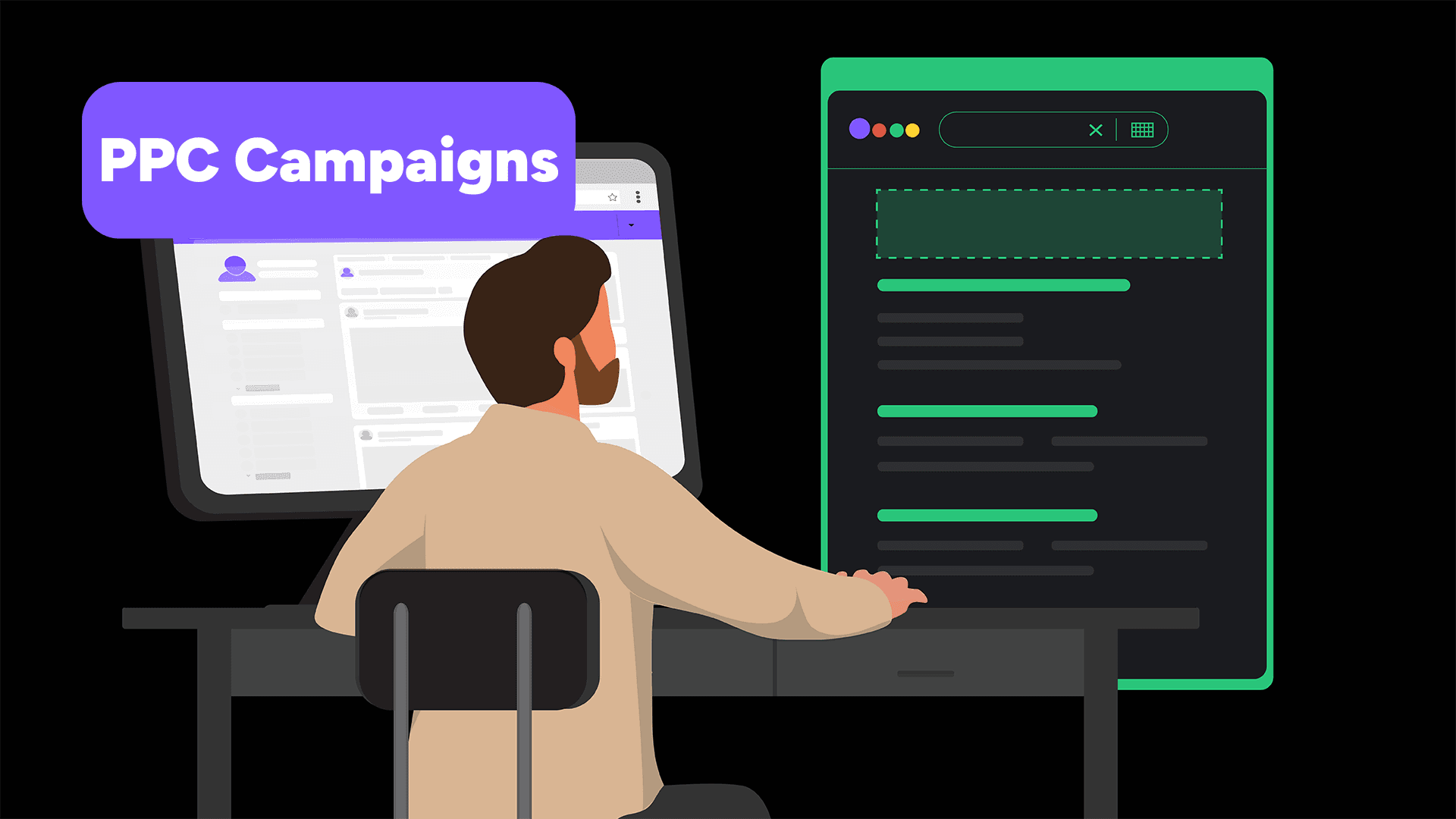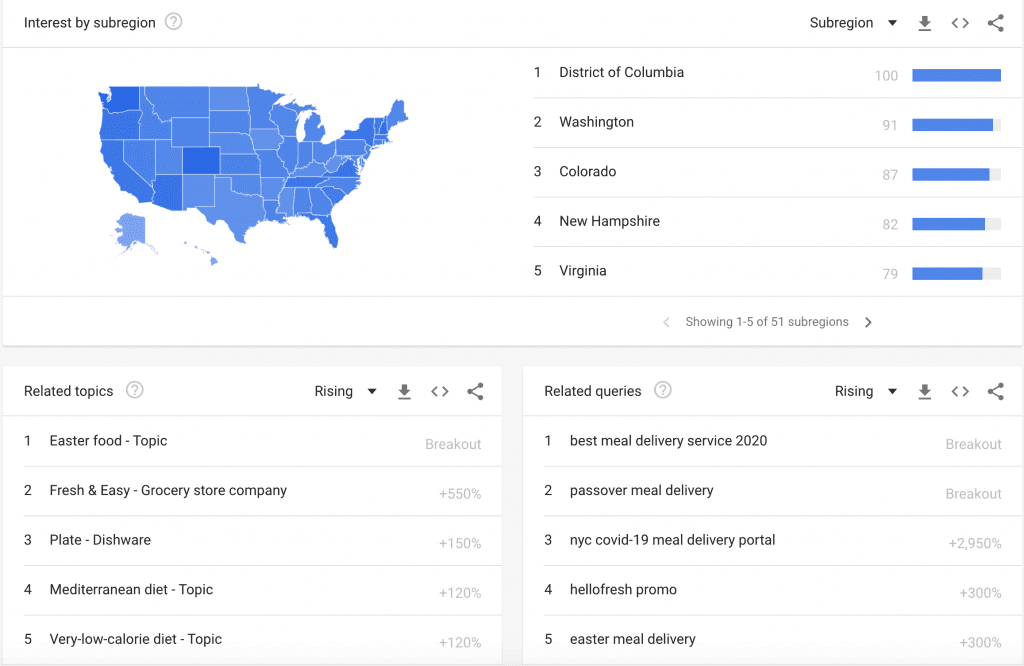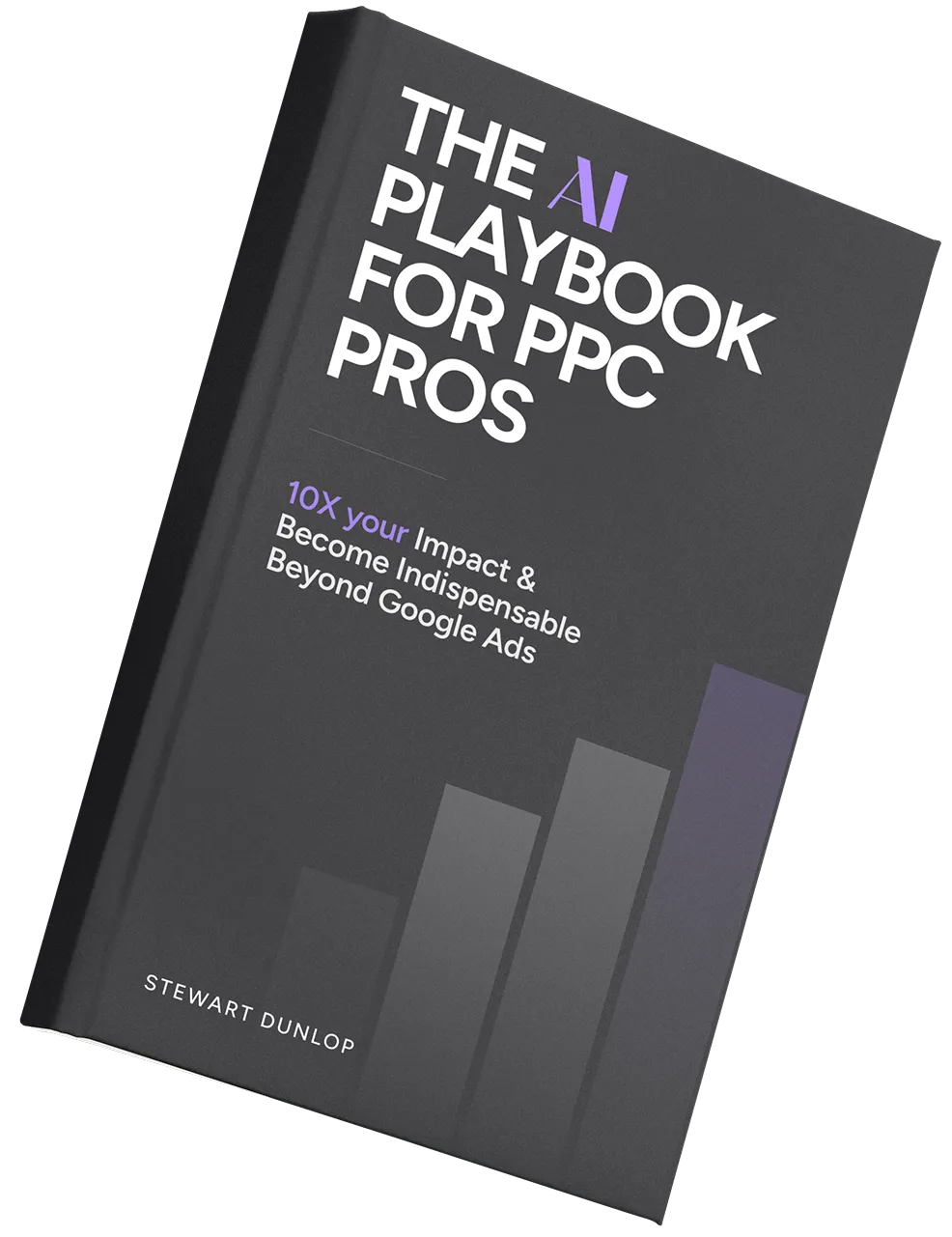
PPC campaign management is an essential aspect of digital marketing that can help businesses achieve their goals, whether to build brand awareness or generate leads for an online sale.
Running an effective PPC campaign requires marketing knowledge and understanding of the advertising platforms. At PPC.io (our agency), we’ve perfected these skills over a very long time 🧠
Since Google is the dominant industry leader with an almost 87% market share, and one of the key services we provide, let us give you 13 tips on how to run an effective PPC campaign with the search engine giant using the Google Ads platform.
1. Set Realistic Goals
The first step in running a successful PPC campaign is setting realistic goals. It’s impossible to create plans, track progress, and measure success without having goals.
A company’s goals will determine the strategy it will undertake and the flow of its campaigns, whether it’s to increase site traffic, attract leads, or generate revenue.
2. Define The Target Market Clearly
The next step in effective PPC campaign management is to define the target market clearly. Find out everything to know about a specific audience, such as their age, location, favorite websites, and preferred device when browsing search engines.
Google has several targeting options that allow companies to spend their budget on people interested in their products or services.
Audience Targeting
Audience targeting can further segment a specific customer group into smaller subsets based on criteria such as age, location, and interests. It’s also possible to target people with specific online behavior, which can be used for remarketing campaigns.
Contextual Targeting
Google analyzes a website’s content with contextual targeting, matching it with an advertiser’s keywords and topic selections.
Placement Targeting
This feature allows advertisers to select website industries or even specific websites that they want their ads to appear.
Topic Targeting
Topic targeting allows advertisers to place ads on sites, apps, and videos with a chosen topic. This feature allows advertisers to be as particular as selecting specific pages on a website they want to be in.
Remarketing
All the previously mentioned targeting methods are great ways to reach the target market, but PPC remarketing provides advertisers with a second chance to connect with their audience and make the potential clients take valuable action towards their goals.
Google allows advertisers to create audiences from those who have previously interacted with the companies’ ads or visited their sites. Remarketing clicks cost less, and their conversion rates increase over time.
💡 You should also definitely add Facebook retargeting to your efforts if you’re not doing so already. It’s insanely cost effective.
3. Show Ads At The Right Time
Part of knowing the target audience is knowing when they are online. Most business-to-business (B2B) companies can effectively show their ads during work hours, but it doesn’t work well for business-to-consumer (B2C) companies.
For those who are unsure, you can set your schedule to 24/7 at first and then scale it back when you generate reports on the most effective time frames for your audience.
4. Choose The Right Bid Strategy
Google Ads has 11 bidding strategies, and choosing the right one is vital in reaching a company’s goals, whether it’s getting clicks, impressions, or conversions.
You can read our in-depth guide to PPC bidding strategy here.
Let’s quickly discuss each strategy.
Target CPA (Cost Per Acquisition)
This strategy is an option to increase conversion rates. Google Ads will bid on each campaign at the set CPA or below it. This method is used as either a standard strategy or a portfolio strategy across several campaigns.
Target ROAS (Return on Ad Spend)
With this strategy, Google Ads sets bids to increase conversion value while aiming to return on ad spend. The bids are optimized during auctions, and advertisers are allowed to customize the bids for each auction. It may also be used as either a standard strategy or a portfolio strategy across multiple campaigns.
Maximize Conversions
Maximizing conversion is a strategy that automatically sets bids to get the most conversions for a campaign. It allows Google to optimize bids and customize them for every auction automatically.
Maximize Conversion Value
This strategy works like target ROAS without the specified return on investment (ROI).
Enhanced Cost Per Click (ECPC)
The ECPC method helps advertisers get more conversions through manual bidding. It automatically adjusts manual bids to get clicks that will most likely lead to conversion.
Maximize Clicks
Maximize clicks is an automated Google Ads bid strategy that sets bids to get as many clicks as possible within the advertiser’s budget. It is the most straightforward strategy for advertisers because after setting a budget, Google will do the rest of the work for auctions.
Manual CPC
Manual CPC involves setting bids for different ad groups and keywords. It provides more control for advertisers, which means spending more time monitoring campaigns. It’s not suitable for PPC beginners.
CPM Bidding (Cost Per Thousand Impressions)
This strategy uses bids solely for impressions and is used exclusively for YouTube ads and the Display Network.
vCPM Bidding (Cost Per Thousand Viewable Impressions)
The vCPM bidding strategy is best used for brand awareness campaigns. Like the CPM, it is used exclusively for the Display Network and YouTube ads.
This strategy sets a maximum cost on a viewable 1,000 impressions. Two seconds of video time on YouTube and one second on the Display Network counts as a viewable impression.
Cost-Per-View Bidding (CPV)
CPV is used exclusively on video ads and can be used on YouTube. Advertisers pay for CPV bidding for video views or interactions.
Target Impression Share
Target impression share is an automated Smart Bid strategy that sets bids to show an ad on the very top or anywhere on the search engine results page (SERP). This strategy is available as a standard strategy or a portfolio strategy.
5. Choose the Best Keywords
Choosing the best keywords for PPC is the backbone of most search engine marketing efforts. The main objective in selecting keywords is to help the target audience find the advertiser, despite the digital space competition.
Choosing the best keywords involves finding a niche, serving its needs, and providing relevant content for the given keywords.
One tool that companies can use for initial planning is Google Trends.
Input a generic keyword, and the free tool will provide information on interest per region as well as related words that are currently popular. For more details, there are also drop-down buttons for industries and the type of Google search used, namely image search, news search, Google Shopping, or YouTube.
In this example, let’s input the keywords “meal delivery” without changing the default search options.
In the following images, you will see that the keywords are more popular in the District of Columbia than they are in Virginia. You can further check the information on all subregions.

You will also see related words that are trending for your chosen category. Instead of selecting generic keywords like “Louisiana meal delivery,” you can opt for something that will serve your niche and the trending topics better, such as “Lafayette gourmet meal delivery.”
Keyword Pruning for PPC
Advertisers will find information on effective keywords under the search terms tab in their Google Ads account.
Prune out these types of keywords:
- Keywords that generate clicks but do not convert
- Keywords with quality scores of three or lower
- Keywords that are not profitable
Remove these keywords and change them with more effective ones to maximize conversion rates and revenues.
6. Use Negative Keywords
Google’s negative keywords feature allows advertisers to exclude irrelevant search words from campaigns. It prevents them from wasting money on on-site visitors who are not at all interested in their products or services.
In the earlier example, the advertiser may opt to include the words “vegetarian,” “vegan,” or “keto” in its list of negative keywords if it does not offer any of those food preferences.
Doing so ensures that anyone typing “vegetarian meal delivery Lafayette” or “keto meal delivery Lafayette” will not come across the company’s ad.
👉 We've put together this list of negative keyword examples, so that you can get more inspiration.
7. Match To The Right Landing Pages
The goal of a PPC ad is to direct visitors to another page that makes them take the desired action, such as making a purchase, signing up for a subscription, or downloading an app.
The landing page has to help the campaign create an easy experience for the users, where they aren’t given a chance to change their minds in finishing the sales funnel process.
Using an article as a landing page, for example, will confuse the audience as to what the next step is. Choosing the “About Us” section will be just as pointless if you want the clients to purchase your products.
The right landing page should enable the visitors to quickly finish the next step of the purchase, sign up, or download.
Having the wrong landing page costs companies money and lowers the landing page’s Google rating if users leave the page in seconds.
8. Write Amazing Ad Copy
The copy is what will make visitors click on an ad or not. No PPC campaign can be effective without good copies, even if the ad groups, targeting options, and keywords are flawless.
Here are some tips for creating impressive copies for text ads:
- Write a catchy headline. There is a lot of competition in the PPC space, and everyone is trying to grab potential clients’ attention. Ensure the headline contains relevant keywords, highlights product or service benefits, and induces an emotional connection with the audience.
- Highlight the company’s unique selling proposition (USP). The body should differentiate the advertiser from its competitors, and it should be compelling and relatable to audiences.
- Be specific. Generic ad copies don’t appeal to audiences, especially in highly competitive industries. Instead of just announcing a “Site-Wide Sale,” add the discount being offered, such as, “Up to 80% off!”
- Be relevant. The ads, keywords, and landing pages should be relevant to each other and add value to the site visitors. Relevant sites generally have higher click-through rates and quality scores, which reduces their cost per click.
- Add a compelling call-to-action (CTA). The CTA is the last line of the ad and should close the deal for the advertiser. Instead of saying “click here,” use words that explain the result, such as download, enroll, or watch.
- Use power words. Given the character limits on text ads, companies should use powerful words so that no sentence contains any unnecessary words. For example, instead of saying, “high-quality, high-end clothing line,” try “glamorous collection.” Click here for a list of power words.
9. Create Multiple Ad Groups
Running campaigns on multiple ad groups allow companies to maximize their exposure to their target market’s different subsets. Google Ads will enable advertisers to target different keywords and users through other ad groups.
Use different copies, keywords, and destination URLs in targeting different market segments to have more chances of running an effective PPC campaign. Having one target keyword and audience limits the advertiser too much and doesn’t set the company up for success.
This practice of segmenting ad groups is also called 'account structure' and is one of the most important aspects of a sucessful PPC campaign.
10. Apply Bid Adjustments
Advertisers should practice making bid adjustments to change their ads’ frequency based on their audience’s location and time and device preferences.
For instance, if most target market members are using their mobile phones in browsing search engines, advertisers can increase the percentage of the budget for mobile phones and decrease the budget for desktop computer and tablet searches.
This is a quick, simple way to maximize the budget and avoid unnecessary spending for the company.
11. Optimize Bids for Best Ad Position
Optimizing bids is one part of any PPC campaign that advertisers must continuously observe. Companies should keep track of performance and analytics daily and ensure the bids will help achieve the set goals.
The two bid optimization approaches are:
- The manual method, which is the basic strategy for optimizing bids. Companies can either add or subtract bids to reach a specific number of clicks or conversions. Multiple campaigns with different keywords will be hard to track using this method.
- The algorithmic method, which combines both manual and automated elements. Marketers prefer this option. It incorporates factors such as budget and goals into the optimization.
12. Track Conversions
Tracking the performance of any campaign is essential in determining whether it is effective or not. It helps advertisers determine which ads or ad groups are contributing more to the company’s goals.
Having relevant information from tracking performance helps advertisers to incorporate better PPC campaign management in the future.
13. Run A/B Tests
An A/B test, also known as a split test, is a process of showing members of the target audience two variations of the same ad to check which option leads to more conversions.
The changes in ads are sometimes minuscule but lead to drastic conversion increases, which may include:
- Tweaking a word or some words in the CTA
- Using different font colors on specific areas of the ad
- Adding words for geographic relevance.
The end goal of A/B testing is to develop the best possible version of the ad, which will lead to the highest possible conversions for the advertiser.
Conclusion
A PPC campaign is a cost-effective way to provide traffic, drive leads, and increase revenues instantly. It’s a great support strategy for any marketing campaign.
But doing it wrong is costly. Proper PPC Campaign Management is necessary to enjoy its many benefits. We highly recommend hiring an agency for those companies with no PPC experts. Partnering with the right one will allow advertisers to reach new heights of online traffic and revenues they have never experienced before.

